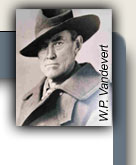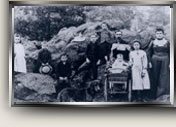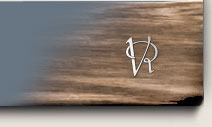Sights and Smells of Vandevert Ranch
By Mary Jean Vandevert, 1990
The Sky
The clear blue sky with its fluffy white clouds is one of the first things you notice when coming over the mountains from the Willamette Valley. I remember it mostly during the hot summer days when playing outside or swimming in the Little Deschutes or during the haying season because, usually, it was Hot. I loved it when I had the river to jump into or when I was lying on a blanket in the shade. Out in the sun, when everyone else was getting a tan, I was getting a sunburn and freckles. But the beauty of the sky was undeniable.
The night sky, black as black can be, filled with a million twinkling stars, and the moon, sometimes a silver wisp and sometimes huge and golden, rising in the east behind the silhouette of the jack pine trees. Watching those stars when lying in the cool evening grass, we needed not to say anything at all. My favorite summers (nearly every one) were when Pop would put out, right by the old house’s dining room porch or off the front porch, an old rusty pair of bedsprings, an old mattress and bedding complete with a full-length tarp to cover it during rainstorms. Then you could lie there and try to count the stars until you went to sleep. You didn’t need a cassette tape of an ocean or a bubbling brook with frogs and night sounds – you had it right there, with the river only 40 feet from the house. Another beautiful sight was the summer nights when the aurora borealis, the Northern Lights, would glow pink, red, white, and sometimes a shade of green, rising and falling like a colorful cascading waterfall. I later found the source in the Yukon. We could look up and see the colors all around us.
Sunsets were sensational. Every one was different. Sometimes the colors were covering the whole sky in pinks and lavenders. Sometimes they were only behind the mountains and the hills where the colors might be reds and fiery golds, then gradually fading to the softer colors. My favorites were when the huge, puffy, cumulus clouds were lined with silver or gold. To take it all in, we would walk up to the rockpile by the front gate, where you could see all of the mountains. I must admit that some of the sunsets at the coast are just about as beautiful, but nothing quite matches the complete picture at the ranch with the mountains, forests, willows, river, fields, and especially watching the cattle and horses and, usually, deer grazing as the sun finally went down.
Deer
So many different times and places. One or two deer in the field or by the river, maybe with a fawn nearby. The ones that got your attention because you seldom saw them were the big bucks with huge antlers, standing so proud and at attention, experienced in watching for danger. When we would drive up the highway to Paulina Prairie, near La Pine, we would guess how many we might see. The least would be twenty or thirty and the average would be sixty or seventy. I do remember seeing a hundred though that was when I was very small. As long as they were far enough from the road they would just look at us curiously and go on grazing. But, if one started running, they might all take off, bouncing across the meadow, leaping over old fallen trees. At other places it was so neat to see a deer gracefully and easily leap over the top of our rail fence.
There was a huge white house at Paulina Prairie which looked like a mansion to me and was the home of the brother of the great writer, Lillian Hellman. I don’t know if any local people ever saw her. My uncle Bill, Aunt Dorothy, and Cousin Barbara lived just across the highway from Paulina Prairie when I was born on December 24, 1934. Gracie, my sister, thought I was her Christmas present.
Fish
In my time there were just trout. German Browns, Rainbows, Whitefish, and, a long time ago, Dolly Varden. I don’t really remember them but I’ve heard enough to know they were Biiiiig. The biggest fish I remember was one my Dad caught at Pringle Falls. He drew an outline of it on a piece of lumber that was near the river and it was almost exactly three feet long. I believe it was a German Brown. Dad (Pop to me) was an expert fly fisherman. He and my older brother Claude tied their own flies. Claude could make a mosquito fly that looked like the real thing and many others of which I can’t think of the names. Pop would go out in the early evening when the shadows were just coming out over the river by the willows and, within minutes, he usually had our supper. Pop was a FLY FISHERMAN! He sometimes would use a worm or a grasshopper, but he rather looked down on anyone who thought fishing was something where you sit on a bridge or the bank of the river and just wait for the fish to come to you.
My favorite fish memory is the summer that we had a school of about five or six big German Browns over twenty inches and fat that actually became tame enough to come and eat bread from my hand while I would sit on the steps going down into the river. Believe it or not, a couple of them would let me stroke their backs as they swam in place there. Instead of a dog paddle I suppose you would call it a fish paddle. Anyway, Pop thought it was pretty neat that I “tamed” those fish. They didn’t come back the next summer. I’m afraid someone wanted to eat them rather than feed them.
Birds
Robins were probably the most prolific of birds at the ranch, other than blackbirds. Humming birds were always “hanging around” the vines on the house. There were blue jays, blackbirds, and red-winged blackbirds. Chicken hawks took their lives in their hands (talons?) when they came circling around the chicken house. I loved to hear the owls hooting in the night. There were sparrows and swallows with their long mud-daubed nests on the side of the house and barn.
The blackbirds had the prettiest songs and trills. Of course there were flights of thousands of geese and ducks in their V formation going south for the winter or north for the summer. We not only had ducks and geese to eat, but to sleep on. Not just down pillows but full down mattresses. I doubt that any guests we had thought of us as poor after the meals we had and the luxurious beds they slept on!
My best memory of birds, though, is the winter that two bluejays stayed at the ranch instead of going south. Not many birds could take the cold. I think this was 1948-’49, the coldest winter I remember. Those beautiful, bright bluejays with the black feathers sticking up on their heads, sitting on the snowy dining room windowsill were a lovely sight to behold. They learned to peck on the window until we came with some breadcrumbs.
One time, during duck and goose hunting season, Tom McNellis (Grace’s husband) came to the ranch as he had a few times before. He eagerly took off by himself along the river, shotgun in hand. Pop was working around outside the house and I was following him around as usual. We heard a shout and looked up. Here comes Tom trotting, almost running, toward the house, with a huge grin on his face and holding up a large white bird. He was so proud.
“Look at what I’ve got. A goose and look at the size of it!” Well, Pop did look at the size of it and he may have gone a little pale himself. He dropped his ax or shovel or whatever and, as Tom got closer, Pop’s suspicions were confirmed.
“Tom, that is not a white goose - it’s a swan!” This happened in the late forties or early fifties and, though the spotted owl problem hadn’t been spotted yet, there were limits. The limit on swans was zero. What’s more, the fine for killing a swan was five hundred dollars. In those days that was many people’s yearly income. To make matters worse we looked up and could see dust on the road heading our way. It was the local woodcutter who lived a couple of miles away. Pop started running towards Tom, yelling at him (and my Dad was not a yeller). “Tom, Tom, we have got to hide that thing right now.” Tom looked, as Pop would say, confounded, wondering what was going on when he’d just made one of his best bird hunting conquests.
They hid it in the woodshed until the woodcutter finished his conversation. When he was gone they took it across the river and buried it DEEP in the woods and DEEPLY in the ground, where it would not be found by wild animals and dug up with white feathers strewn all over. I believe it is understandable that Pop didn’t turn Tom into the sheriff. I believe even more that Tom is happy about that too.
Dogs
Our dogs were named Tippie and Nicky (short for Nicholas De Poplis – an old sheepherder that my Dad knew). I believe they were both Australian shepherds but Nicky was by far the best looking. He was longhaired, mostly black, but with a beautiful collar of white. His nose was all white and all four feet also. His ears were pricked up and he was always in a state of great excitement, as I remember, and his worst problem was jumping up on people. I always think of the times we would hear this sad noise and go in the dining room to find either one of the dogs standing on his hind legs and waiting for us to come because they had been in an entanglement with a porcupine. It seems to me it was very brave and smart of them to come to us because they knew it was going to hurt to have those quills removed. They knew they would get rid of them at least. We would slide back the window, bring the pliers, and start pulling out each quill, one by one. The quills were mostly in their noses but sometimes in their feet and legs.
Family Members
My father, Claude Chandler Vandevert, Sr. had the most integrity and was the most honorable and honest person I knew, along with all his many other wonderful traits. As far as I know, the swan incident was Pop’s only illegal act, or maybe I should say “cover-up” in his long and good life. This included paying all his taxes and, I might add, paying all the fees for every bull, cow, and calf which he kept on the range leased from our federal government. The government, in its wisdom, would not allow him to run more than forty-five to fifty cattle, even though there was room for many more.
Pop’s goodness included giving to those who had needs. I know he gave tools and other things to the Indians who passed through, though he traded a lot with them. My Mom was always looking through the closets, bureaus, and for home canned foods or whatever for our neighbors who may have used any possible extra money on their scores of cats. I think I could say, literally, maybe over a hundred. They lived in a one or two room small log cabin. If I remember right, it burned down completely after a cat knocked over a coal-oil lamp. I can’t remember my Mom or Dad ever saying anything against them, even with the very musty cat smell that came into the house with them. Pop also sold them things when necessary, for usually much less than they could have bought from someone else.
I think of when Mom would get dressed up, especially for going to Saturday night Grange dances in La Pine. Being so short (I was seven years old when she died) I remember a lot of her skirts and aprons and the fabric they were made from with one pink flowered dress in particular. I remember watching her get ready to go, powdering her face and using perfume from a beautiful small green glass bottle with a dropper which she kept in the kitchen corner glass door cupboard. I think I have always had a thing about green glass because of that.
I remember we girls usually washed our hair with just Ivory soap. We didn’t get to town very often and we needed vinegar to rinse it with. Gracie, my sister, had the prettiest hair of all. It was dark brown and so long she could sit on it. I hated it when she had it cut when she was a teenager. Anyway, it did smell sooo clean when she washed it. She and Mom used Evening of Paris, too. I can also remember the smell of her lipstick which, during the war, seems to me to be just Tangee. Gracie was one person could really wear red well.
Smells of the Ranch
Bull Durham tobacco! That may seem like a strange thing to start out with, but I think it is because of Pop. I miss him most of all and probably have more memories of him than of anyone else. The smell I associate with him is his shirt smell of cigarette smoke when I would sit on his lap. He rolled his own and used Bull Durham tobacco, though later on he went modern and smoked Camels. That just reminded me of Uncle Bill. He used Prince Albert in the can of course. But I think he always used a pipe. As long as we are on the subject, Uncle Doc, from Bend, and, I think, Uncle George from Piedmont, California, and Uncle Bush from Sellersberg, Indiana, were all DOCTORS and all smoked only cigars. I loved all the aromas then though I can’t take much of any of them now.
Talcum Powder: Rose and Lilac came in a rectangular flowered can. I covered my whole self with it after my bath in a rectangular tin tub with hot water from a huge copper boiler on the stove. In the summer my baths were in the river. Most of my baths were on Saturday night. I remember good music while taking my bath so that must have been when the New York Philharmonic or the New York Operas were on. I intend to write more on Pop’s love of good music.
Wild Strawberries: The smell was so sweet and the taste was better and sweeter than any I’ve ever gotten from the store or picked up on a farm.
Flowers: We had only two narcissus with their sweet, sweet, smell. One was by the side of the house and the other on Aunt Grace’s grave. We had red geraniums in the window, I think, until Mom died. Pansies in the summer. Pop always got some for under the dining room window. Also, the years that Pop planted vetch it was lovely among the plain green rye. There was the very special Indian Paintbrush in among the lupine and near the river banks. On the sloughs were bright yellow pond lilies. In the spring you could find pussy willows that would last for ages.
There was another small yellow flower like buttercups that you could catch one against the other and whoever pulled the other’s flower head off was the winner. One of the prettiest flowers was the white Queen Anne’s lace, except it didn’t smell very good. Another bad smeller was what we called mustard. It was a spike of ugly mustard color and leaves which could give you a rash.
Skunk cabbage wasn’t a flower as much as a very large leaf that was big enough for a kid to hide among. We had pine gum, which was very bitter, but at least it was gum. And pine nuts. Pine moss, which was green when new but long and black when it died so you could use it for moustaches. There were pine cones from the jack pines but the ones from our few yellow pines were the largest and prettiest. There was one sugar pine a few miles away near Sugarpine Butte (naturally). We would go there to get the huge, gorgeous pinecones from it for Christmas decorations.
We had candles on our Christmas tree before we got electricity. We had to be very careful and not touch it. It was very beautiful.
|






